Chainless bikes are not a new innovation. The first machines to resemble what we recognise as bicycles were propelled by a rider’s legs, but it didn’t take long to find an engineered alternative to human power.
Solutions and tinkering from pioneering inventors turned to existing industrial and mechanical methods of turning gears. This ingenuity brought the shaft-drive system to the bicycle.
Although many inventors received patents, commercial development of the system was eventually stopped by the efficiency and relative low cost of the chain drive system.
The arrival of the derailleur in between the two world wars brought standardisation and utility to the world of cycling, coinciding with mass production. The chain drive system, even though not universal, was here to stay and the shaft-drive system fell by the wayside.
The increasing cost of vehicular transportation plus environmental concerns has resurrected functional cycling and this brings renewed invention, ideas and investment. Designers started to look again at the alternatives to a chain.
The capital and the interest around cycling and the desire to shift the perception away from lycra and the Tour de France back toward the egalitarian essence of the regular commute keeps the cogs of alternatives to the chain drive system turning.
What is a Shaft-Driven Bicycle?
A shaft-driven bicycle uses rotational gears to propel the bicycle as opposed to a traditional chain or belt drive system. Shaft-drive systems are used in the automotive industry and have industrial purposes too. The forces created by turning pedals are still translated into forward motion.
A shaft-driven bicycle is unfamiliar to the eye. The first thing to notice is that the whole system is very clean, minimalist and built into the frame of the bike. That’s right – the shaft-drive doubles up as the chainstay of the frame.
It’s much more compact than a chain drive system. There are no exposed parts, and no day-to-day maintenance with a shaft-drive system. This is undoubtedly safer, tidier, and offers more predictable pedalling.
Shaft-driven bikes are used by some mass-use rental and hire companies, especially for short, urban journeys with limited need for gear changes or a wide gear ratio and significantly reduces daily maintenance costs and keeps the bikes on the roads.
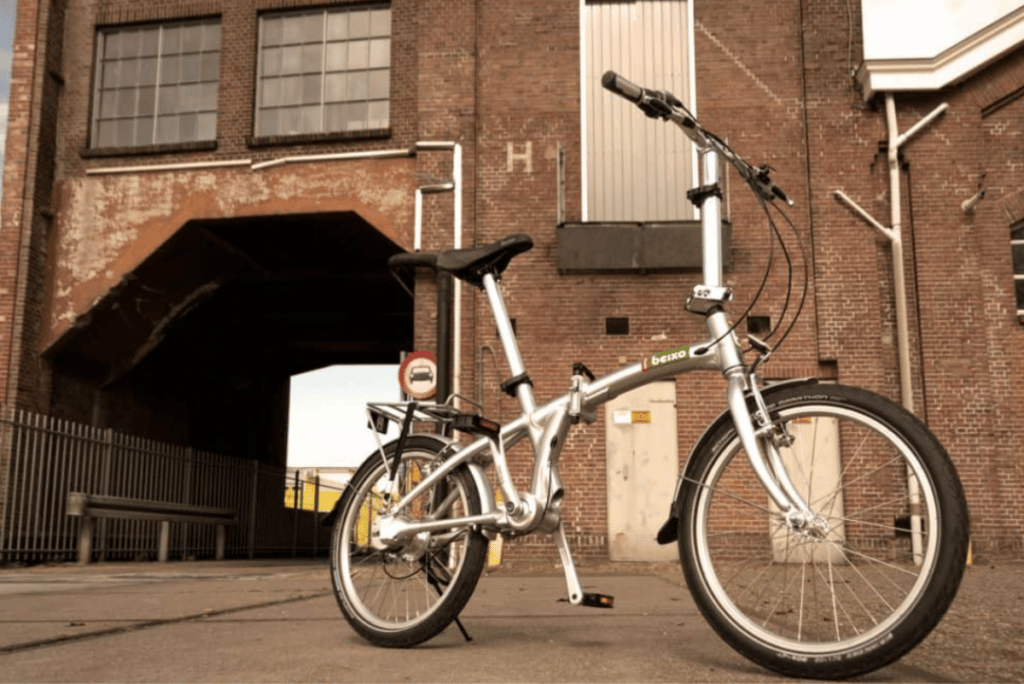
How Does a Chainless Bike Work?
Starting at the front, the normal pedalling motion rotates a metal gear, referred to as a bevel gear. A bevel gear has grooves and must mesh with another of the same type to create further rotation and propulsion. The second of these gears is at one end of a shaft.
At the other end of this shaft, which goes towards the rear of the bike, is another bevel gear which completes the connection to a final gear attached to the rear wheel. This completes the connection between pedals and rear wheels, and thus can propel the bicycle forwards.
These two rotations, one at the crank, and one at the rear wheel, create the force to move the bike forwards. A shaft-driven bike can operate with one gear, or it can be combined with an internal hub gear, to provide a range of gears.
The set-up requires no day-to-day maintenance once you start riding. Therefore, the shaft with the bevel gear at either end can be housed inside the right hand side chainstay of the frame. It’s very clean and minimalist. Have a look at this example – it’s an Instagrammer’s dream. The symmetry and functionality is a joy to behold.
Shaft-drive systems can be engineered so that you can backpedal to apply a braking system just like how a fixed wheel bike operates, or you can freewheel.
Are Shaft-Driven Bicycles Good?
Shaft-driven bikes work, although they’re a bit heavier and slightly less efficient method than belt or chain systems. The popularity and range of the derailleur system has usurped most other systems. The shaft-driven system promotes maintenance free riding over a smaller range of gears.
But because the principle is similar to the prop shaft underneath most vehicles, we can think about how infrequently we need to service or tinker with that system. That’s where we see some good with a shaft-driven system.
If you are planning a very, very long excursion into a part of the world with no bike shops, and you are relying on your own skills as a mechanic, then an entirely enclosed drive system with fewer moving parts (with the possible addition of an internal gear hub at the rear) could be seen as more reliable.
If you add a lot of mud and water to a chain drive system, it starts to nag and could easily become more challenging to manage. Shaft-drive systems are designed to be reliable for a long time.
There are some essential safety features of an enclosed system – you’re not going to snag fingers, scarves, flapping trousers or loose hems on any enclosed gears.
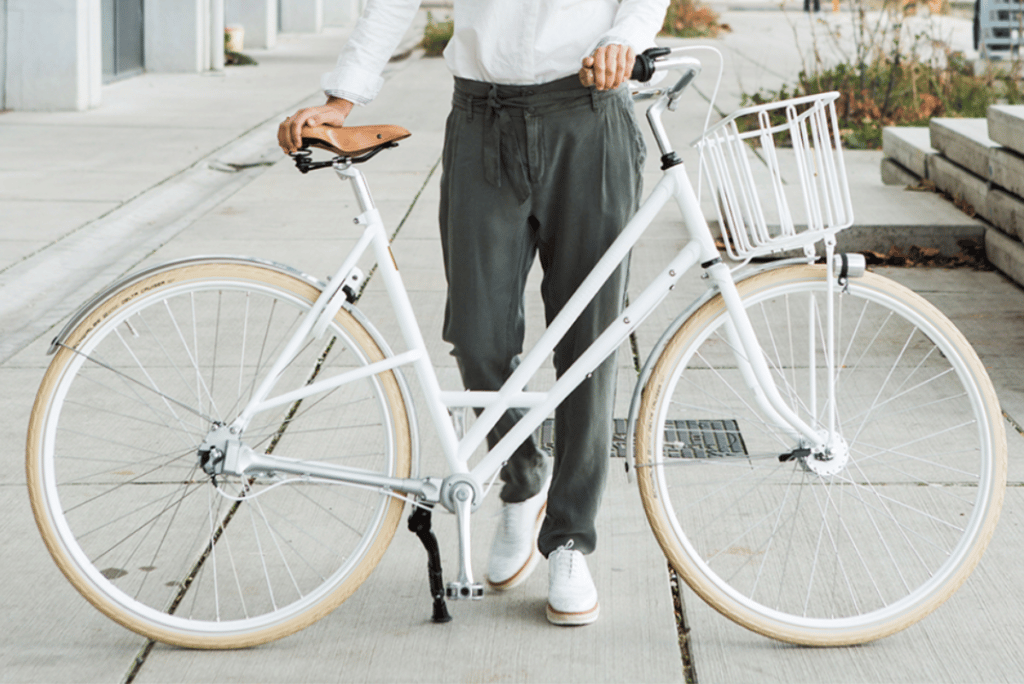
Chainless Bikes [PROS + CONS]
| PROS | CONS |
|---|---|
| Enclosed system is safe, clean and long-lasting | Less efficient system than chain or belt drive systems |
| Pedalling performance is consistent without needing adjustment and ‘tinkering’ | You’re kinda stuck with it – shaft-drive systems are not compatible with derailleurs – they are a proprietary system |
| Ground clearance – no chainrings or derailleurs | Harder to change a flat tyre – disassembly of chainless system harder than with a chain |
| You can gear shift (with added internal hub gears) at a complete stop | Costlier and heavier |
Shaft-Drive vs Belt Drive vs Chain
The downside of chain driven cycling is the essential maintenance of it, along with gearing components and the risk of contamination of your clothing with all that liquid lubrication.
In the 21st century, the growth of electrically assisted belt driven pedalling is also calling into question the actual need for gearing to support efficient, effective riding.
Pedalling efficiency is lower with a shaft-driven bike compared to other variants. You want as much reward for pedalling as possible. But no bike offers 100% return on your investment. The mechanical process cannot convert all your effort into forward motion. The two bevel gears convert less of your energy than a traditional derailleur set up, or even a single gear.
It’s not massive in terms of a difference, but in one example test, the shaft-drive system was suggested to be four minutes behind a chain driven bike of the same weight on a hour long climb up a constant 5% gradient. Belt drive systems are also said to be slightly less efficient than chain drive systems.
The belt drive system is low maintenance and requires no lubrication. It also has a long lifespan. However, a bit like the shaft-drive system, it comes with a specialist frame. You need to split the frame to take the belt off.
By far the most effective use for the belt drive system in the cycling industry comes in its application for electric bikes. Assisted pedalling means fewer gears, and less servicing and moving parts.
It’s great to see belt drives being used in this growth area because it makes electric cycling and commuting more accessible and takes it out of the realm of the shed mechanic.
Best Shaft-Driven Bikes
Honbike HF01 Commuter E-Bike
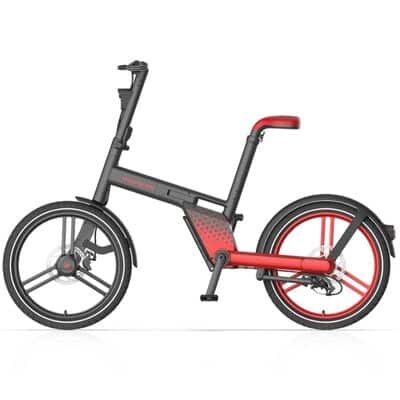
This shaft-drive bike is designed for a modern commuter who uses the bike as one part of their daily journey. It’s electric and foldable. The patented shaft-drive system is on the left hand side chainstay and is fully sealed.
Honbike advertises 40,000km without maintenance. It has a 250W motor and a hill start feature. There are other great design features such as all over adjustability, built in lights, mudguards, a built in carry grip and foldable pedals.
This product comes with a two-year warranty. The advertised weight is 20.8kg and the advertised estimated range of the battery is 40km.
Brik Sec (Men/Women)
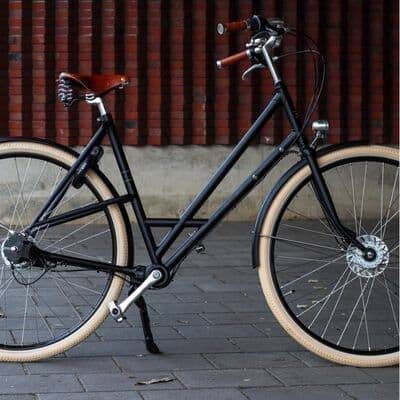
Taking our favourite Dutch transportation concept forwards are Brikbikes. They offer sporty bikes but we’ve plumped for the city bike with some retro styling tips. The frame is particularly sturdy like the best Opafiets/Omafiets and in addition you get a comfortable and upright riding style.
You get the enclosed system and standard features include curved handlebars, three gears, a Selle saddle and built in lock.
The company offers personalisation options for mudguards / fenders, creme tyres, a Brooks saddle and carriers. And because the Dutch riding philosophy is all about companionship and community, you can get child saddles, carriers, panniers to support your day to day use.
There are dealers currently in northwestern Europe.
Beixo Compact
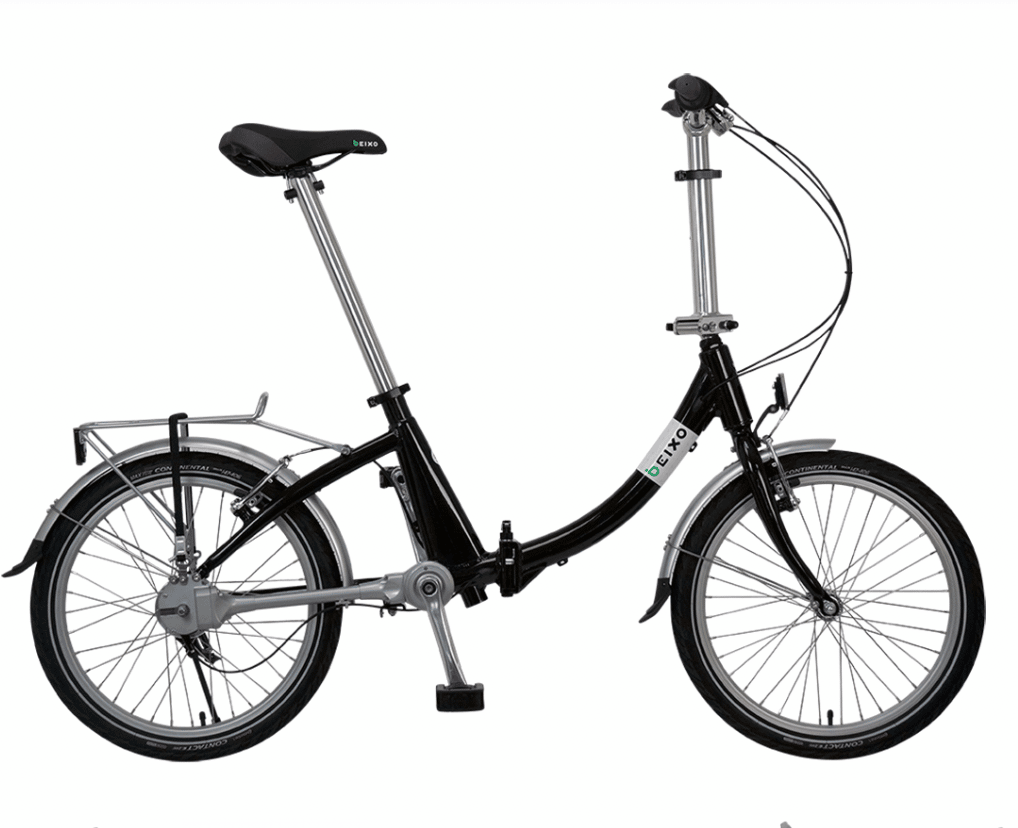
Another product from the Netherlands, where cycling design and innovation stretches beyond the sporting sphere. This compact folding bicycle offers an integrated shaft-drive and offers a step through or traditional frame.
Beixo has worked with shaft-drive tech since 2005 and offers a three year warranty. In fact, it is a company which only sells chainless bikes as advertised.
Although the bike comes with 20 inch wheels associated with a folding bike, the company advertises that it is also suitable for longer journeys. A seven-speed hub gear helps you to move along and an e-bike option is available. Further configuration and accessories are also offered.
The advertised weight of the Beixo Compact is 15.3kg.
The post Chainless Bikes: How Shaft-Driven Bicycles Work appeared first on Discerning Cyclist.
